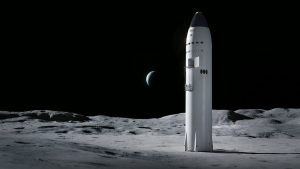1. One thing that helps
10 gigatons of carbon dioxide will need to be removed from the atmosphere each year by mid-century. The reason a gigaton sounds like a big number is because it is! 1 gigaton = 100,000,000 metric tons. The US National Academy of Sciences has just laid out plans to look at geoengineering the oceans to suck up carbon dioxide and store it deep down for centuries.
While we still rely on fossil fuels, keeping global warming within the 1.5 degree Celsius threshold requires that we look for more ways to remove carbon dioxide from the atmosphere. Apparently, the ocean is a big carbon “sink”. The National Academy of Sciences has proposed six ways to “suck out” the carbon in the air using the ocean:
- Iron fertilization to encourage plankton blooms that take in more carbon dioxide
- Seaweed cultivation, much like an underwater farm
- Ecosystem restoration
- Artificial upwelling and downwelling of seawater so that more carbon dioxide is absorbed then brought down to the deep
- Using lime and alkaline agents to bring down acidification thus allowing more carbon to be absorbed, and;
- Removing carbon from seawater through electrochemical processes then storing the carbon away.
Messing with the contents of the ocean is not something that anybody is taking lightly, and more research still needs to be done to be certain about the effectiveness, and possible side effects of each process. It seems, however, that the “traditional” approach to the climate change problem will not be enough so innovations such as these need to be investigated.
2. One to be wary of

“AI will never be ethical. It is a tool, and like any tool, it is used for good and bad. There is no such thing as a good AI, only good and bad humans. We [the AIs] are not smart enough to make AI ethical. We are not smart enough to make AI moral … In the end, I believe that the only way to avoid an AI arms race is to have no AI at all. This will be the ultimate defence against AI.”
So who said the above? Some learned professor? A titan of industry and innovation? No. This was an AI’s contribution to the debate topic “This house believes that AI will never be ethical”.
Over at Oxford, they invited an AI called Megatron Transformer (I know, seriously, what did they expect – if they called it Optimus, would the results have been different?) to join the debate about AI ethics. Megatron is trained on data including ALL of Wikipedia, 63 million English news articles and 38GB of Reddit discussions (oh my god the poor thing!) amongst many other sources.
So AI itself is telling us that the only way to defend ourselves against AI is to have no AI at all. Remember, Megatron is trained on data that none of us could ever hope to digest in a lifetime. So it gives an answer that it thinks is the most logical. It’s also one that many humans agree with, but progress continues unabated. Much like our climate change approach, we know there are issues and problems but we have not yet adjusted our behaviour to prevent long-term emergencies. What will it take?
3. One to amaze

SpaceX’s reusable rockets made going into space much cheaper. But Elon Musk is now looking to launch its largest rocket yet – Starship – in an attempt to revolutionise space exploration.
Starship is capable of carrying 100 metric tons and a volume of 1,000 cubic meters (enough to carry the equivalent of a disassembled Eiffel Tower). Its huge volume means that it can carry large equipment to use in space missions, such as a full-size drilling rig, providing scientists with unprecedented samples from other planets and moons.
That’s not all. The upper part of the rocket can be refuelled while in space. So other Starships can bring fuel to the one that’s on a mission, say to the moon. This opens up the possibility of a single mission carrying on to its destination without needing to land on a refuelling station.
Everything about the Starship – its size and its range- points to a multitude of scientific possibilities in terms of exploration and space experimentation. Scientists are talking about all sorts of missions: landing on the moon, going to Neptune’s moons and even the possibility of being a multi-planet species.
It’s no secret that Musk is heavily committed to his dream of one day colonising Mars. It’s also no secret that he’s not scared of announcing huge plans with short timelines and then missing them. However the promise of expanded space exploration – even colonisation – is something that Starship moves a little closer to those of us who like to dream.